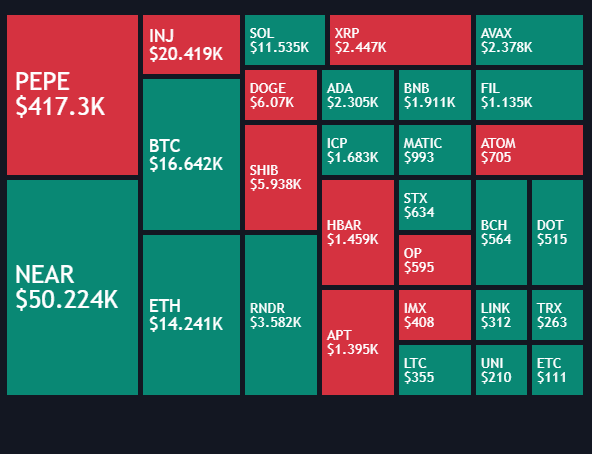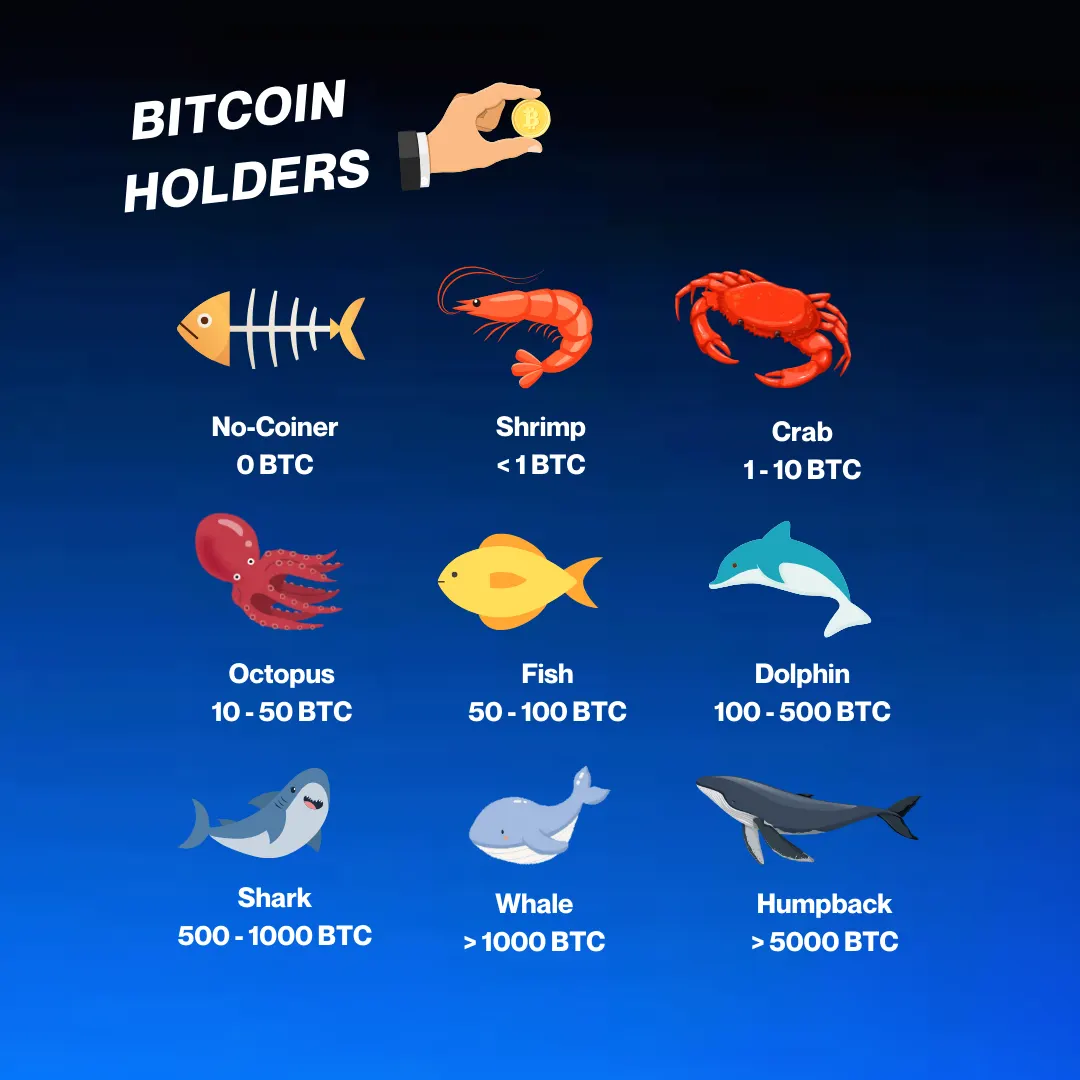Bitcoin ETF Revolution: How Spot ETFs Are Changing the Crypto Investment Landscape in 2025
May 16, 2025 | by bestcrypto

The world of cryptocurrency has always been marked by innovation, disruption, and evolution. From the early days of Bitcoin as a decentralized peer-to-peer currency to the rise of Ethereum and the explosion of decentralized finance (DeFi), the crypto space has continually defied expectations and redrawn the boundaries of finance. Yet, one of the most groundbreaking shifts in recent memory has emerged not from a new protocol or blockchain, but from the corridors of traditional finance: the rise of the Bitcoin spot Exchange-Traded Fund (ETF).
As of 2025, the introduction and mainstream acceptance of Bitcoin spot ETFs have dramatically altered the landscape of cryptocurrency investment. These financial instruments, which allow investors to gain direct exposure to the price of Bitcoin without having to buy or store the asset themselves, are reshaping how individuals and institutions interact with the digital asset market. In this article, we’ll explore how spot ETFs came to prominence, their impact on the market, the key players involved, the challenges they face, and what the future holds.
The Road to Bitcoin Spot ETFs: A Brief History
The idea of a Bitcoin ETF has been around since at least 2013, when the Winklevoss twins first filed an application with the U.S. Securities and Exchange Commission (SEC). However, for over a decade, the SEC rejected or delayed approval of such products, citing concerns over market manipulation, lack of regulation, and investor protection.
While futures-based Bitcoin ETFs gained some traction after their approval in 2021, these products were often criticized for inefficiencies and a lack of true price tracking. Futures ETFs derive their value from contracts rather than the underlying asset, leading to issues like contango and roll costs that eroded investor returns.
The breakthrough came in late 2024, when several major asset managers, including BlackRock, Fidelity, and ARK Invest, finally received approval for spot Bitcoin ETFs. This approval followed years of legal battles, public advocacy, and increasing regulatory clarity surrounding digital assets. The market response was swift and enthusiastic, with billions of dollars pouring into these ETFs within weeks of their launch.
Why Spot ETFs Matter
Spot ETFs represent a fundamental shift in the accessibility and perception of Bitcoin. Unlike futures-based ETFs, which track contracts, spot ETFs hold actual Bitcoin in cold storage on behalf of investors. This direct exposure eliminates many of the inefficiencies associated with futures-based products.
Benefits for Investors:
- Simplicity: Investors can buy Bitcoin exposure through traditional brokerage accounts without dealing with wallets, private keys, or exchanges.
- Regulation and Safety: Spot ETFs operate under stringent regulatory frameworks, providing investors with enhanced protection.
- Liquidity: The ETF structure allows for intraday trading and high liquidity, making it easier for large institutions to enter the market.
- Tax Efficiency: ETFs often offer favorable tax treatment compared to direct crypto holdings, especially in retirement accounts.
These advantages have not only attracted individual investors but also opened the floodgates for institutional capital that was previously hesitant to touch unregulated crypto markets.
The Market Impact: Capital Inflows and Price Movements
The launch of spot Bitcoin ETFs in early 2025 catalyzed a dramatic increase in capital inflows into the cryptocurrency market. Within three months, over $75 billion had flowed into various spot ETF products globally. BlackRock’s iShares Bitcoin Trust (IBIT), for example, became one of the fastest-growing ETFs in history, surpassing $30 billion in assets under management (AUM) in record time.
This influx of institutional capital brought with it increased stability and legitimacy for Bitcoin. Volatility decreased, and Bitcoin’s price experienced a steady upward trend, breaking past its previous all-time high of $69,000 to reach $120,000 by Q2 2025. Analysts attribute this rally not to retail mania, but to sustained institutional accumulation driven by ETF demand.
Moreover, the ETF boom has positively affected the broader crypto ecosystem. With Bitcoin as the gateway, other digital assets and sectors, such as Ethereum, layer-2 solutions, and DeFi protocols, have also experienced renewed investor interest and price appreciation.
Key Players: Titans of Wall Street Enter the Chat
The success of Bitcoin spot ETFs has drawn in some of the most powerful names in finance. Here are a few of the leading players shaping the ETF landscape:
- BlackRock: As the world’s largest asset manager, BlackRock’s entry into the Bitcoin ETF space through its IBIT fund was a watershed moment. The firm leverages its extensive distribution networks and reputation to bring Bitcoin exposure to a global audience.
- Fidelity: Already a pioneer in offering crypto services to institutional clients, Fidelity’s Wise Origin Bitcoin Trust has become a top choice for retirement accounts and long-term investors.
- ARK Invest: Known for its bold bets on innovation, ARK’s Bitcoin ETF focuses on appealing to tech-savvy retail investors and growth-oriented funds.
- Grayscale: After a lengthy legal battle, Grayscale successfully converted its flagship Bitcoin Trust (GBTC) into a spot ETF, allowing it to close the discount gap and regain relevance in the market.
These firms are not only offering products but also engaging in education, lobbying, and infrastructure development to support the broader crypto market.
Regulatory Landscape: Progress with Caution
While the approval of spot ETFs marked a regulatory milestone, the broader landscape remains complex. In the United States, the SEC continues to scrutinize other crypto-based products, and legislation aimed at clarifying the status of digital assets is still evolving.
However, the success of ETFs has prompted regulators in Europe, Asia, and Latin America to adopt a more open stance. Countries like Canada, Switzerland, and Brazil have already embraced spot ETFs, and markets such as Japan and the UAE are following suit.
This regulatory shift is creating a more harmonized global market for digital assets, but challenges remain. Issues such as custody standards, cross-border taxation, and anti-money laundering (AML) compliance are still being worked out.
The Rise of Bitcoin in Retirement Portfolios
One of the most significant consequences of ETF adoption is the inclusion of Bitcoin in retirement and pension portfolios. Financial advisors and retirement plan providers now have a compliant and straightforward vehicle to allocate a portion of assets to Bitcoin.
The narrative around Bitcoin has evolved from “speculative asset” to “digital gold,” and its role as an inflation hedge and store of value is increasingly being accepted. Some pension funds have already begun allocating 1-3% of their portfolios to Bitcoin ETFs, citing long-term growth potential and diversification benefits.
This trend is expected to accelerate, with analysts projecting that by the end of 2025, over 10% of U.S. retirement plans will include some exposure to Bitcoin through ETFs.
Challenges and Criticisms
Despite their success, Bitcoin spot ETFs are not without criticism and challenges:
- Centralization Risks: By placing Bitcoin custody in the hands of a few large institutions, ETFs reintroduce centralization, which goes against the ethos of decentralized finance.
- Custodial Concerns: While ETFs use trusted custodians, concerns about hacks, mismanagement, or regulatory seizure persist.
- Market Distortion: Large ETF flows can affect market dynamics and price discovery, potentially leading to unintended consequences.
- Retail Misunderstanding: Some investors may not fully grasp that owning ETF shares is not the same as owning actual Bitcoin, missing out on aspects like self-custody and usage in DeFi.
Nevertheless, proponents argue that these issues are manageable and outweighed by the benefits of broader adoption.
The Future: Beyond Bitcoin
The success of Bitcoin ETFs is already prompting discussions about similar products for other cryptocurrencies. Ethereum spot ETFs are on the horizon, with several applications pending approval. Analysts also foresee the potential for diversified crypto index ETFs that bundle various assets, providing a gateway to the entire ecosystem.
Moreover, tokenization of real-world assets (RWAs), such as real estate and bonds, may soon find ETF parallels, blurring the lines between traditional and decentralized finance even further.
On a macro level, the normalization of crypto ETFs could herald a new era in asset management, where blockchain-based assets sit alongside stocks and bonds in every investor’s portfolio.
Conclusion: A Watershed Moment for Crypto
The advent of Bitcoin spot ETFs marks a watershed moment in the evolution of cryptocurrency. By bridging the gap between traditional finance and the digital asset space, these instruments are democratizing access, legitimizing the asset class, and ushering in a new wave of adoption.
As we move through 2025 and beyond, the ETF revolution is not just about Bitcoin—it’s about the future of finance. In this future, digital assets are no longer on the fringe but form an integral part of the global financial system, accessible to all through familiar, regulated channels.
While challenges remain, the momentum is undeniable. Bitcoin ETFs are not the end of the crypto journey, but they represent a powerful milestone—one that paves the way for the next generation of financial innovation.
RELATED POSTS
View all


